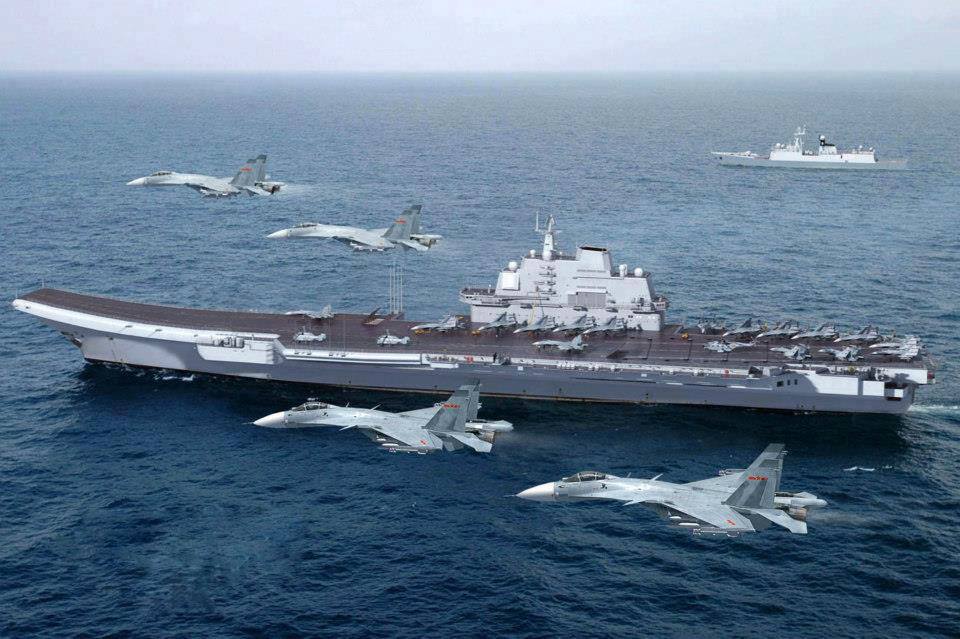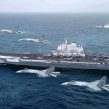
China Examines Military Strategy
Publication: China Brief Volume: 14 Issue: 3
By:

During the start of 2014, China’s official media have, by their own account, been undertaking a reexamination of Chinese military strategy, in response to a call issued by Chinese President Xi Jinping to improve “national defense and army-building” (Qiushi, January 16). Two major articles, published in the Party ideological journal Study Times and the military’s PLA Daily, offering divergent understandings of China’s present situation and the future of its military, while a larger body of writing has re-cast established military concerns as “strategic” issues.
The first of these offers an optimistic vision rooted in Xi’s concept of the “China Dream,” emphasizing China’s growing strength and calling for a military that befits its status as a global player. As the January 27 Study Times article, “The China Dream on the Threshold of the Dream of a Strong Military” (Zhongguo Meng Shi Yuli de Qiangjun Meng) puts it: “The China Dream impels new military thinking: The process of military strengthening must be adapted to the Great Revival of the Chinese Nation, correctly settling questions of military strategy and establishing a military strategy that protects national development and supports the achievement of major power status.”
The Study Times article calls for China to adopt a strategy of “outward-oriented military power,” and develop “limited global military power” in keeping with the country’s global interests. While reiterating commitment to China’s promises not to “pursue hegemony” or establish overseas military bases, the article calls for the construction of a military capable of protecting distant sea lanes, as well as fulfilling global responsibilities such as participating in peacekeeping missions.
The PLA Daily take, “How to Confront the ‘Silent Battlefield’ of National Destiny” (Ruhe Miandui Shiguan Guojia Mingyun de “Jijing Zhanchang”)—since republished on the website of the Ministry of Defense, emphasizes the threat of being outclassed by military competitors and the difficulty of maintaining China’s territorial integrity in the face of maritime claims by neighboring states (PLA Daily, February 4). The article argues that changing circumstances require constant changes to military strategy, quoting a famous dictum of Sun Zi: “In times of peace, prepare for war” to warn that China’s military lacks a “sense of crisis” (weiji yishi): “The lack of a sense of crisis—this is the greatest crisis!”
The article makes favorable reference to the strategic innovations of Mao Zedong’s Red Army, as well as the United States—arguing that frequent small wars drive the U.S. military to engage in a constant cycle of critical self-examination and innovation—even suggesting that American strategists consciously exaggerate threats to drive this process. It quotes an (apparently specious) “American saying”: “Without great enemies, America could not be great.”
In contrast to the Study Times, the PLA Daily makes specific recommendations for building a military to suit the times. Repeating long-established buzzwords, it calls for “information-centric warfare” and joint command structures (for more on efforts to improve inter-services coordination, see China Brief, November 22, 2013). It also argues that naval strategy should emerge as the core of new strategic thinking, arguing that “the peripheral situation is growing more severe every day.” Meeting this challenge, the article argues, requires “proactive defense” far from China’s shores.
Surrounding these two assessments, military and Party journals have published a range of articles calling for strategic innovation, evaluating efforts at military transformation in other countries and proposing focuses for China’s military development. Most have followed Xi’s emphasis on “army-building,” focusing more on developing systems and command structures that strengthen the military than on assessments of China’s needs for military force. These proposals are largely framed in two contexts: as an application of Hu Jintao’s theory of “scientific development,” and as an effort to respond to and emulate the military innovations of the United States (for more on the role of Party ideology in guiding military thought, see “Restructuring the Military: Drivers and Prospects for Xi’s Top-Down Reforms,” in this issue of China Brief).
These range from surveys of international military development, such as a January 3 article on a “Climax in the Revolution in Military Affairs” (Waijun Junshi Zhuangxing Jianru Gaochao) in PLA Daily, which argues that China must develop faster simply in order to keep up with other powers. The United States, it writes, is determined to remain “a generation ahead” of military rivals—cuts to the defense budget, it says, will only lead the United States to make better use of what it has—and has overcome a history of over-emphasizing technology at the expense of human factors through the experience of the War on Terror. Meanwhile, it reports that India and Russia are making vast investments to build armies on China’s borders, and France is making a bid for “major power status” through by leading humanitarian intervention in Africa.
More representative, however, are articles imploring readers to study the comments of Xi Jinping (Qiushi, January 16), and what appear to be efforts to apply a “strategic” label to individual hobbyhorses, such as one dramatizing the need for standardized parts in weapons and communications infrastructure: “Strategic Competition: He Who Obtains Standardization Shall Obtain the World” (PLA Daily, January 14). Numerous other articles have stressed the unique roles of, for example, defense education, “military management” and engineering in military progress.
Overall, the response to Xi’s call for strategic thinking appears to have focused largely inward, emphasizing shortcomings, areas in which China is behind other nations—especially the United States—and specifically failures of management and coordination. While we know little about private debates going on within the Chinese leadership compound at Zhongnanhai, there is in public a tightly-controlled effort underway to propose new ways of thinking about China’s place in the world. For the time being, these questions are being examined as ways into debates about internal restructuring, and this limited dialogue appears to be largely subservient to Xi’s goals of reforming and restructuring the Chinese military as part of a general project of reform.




